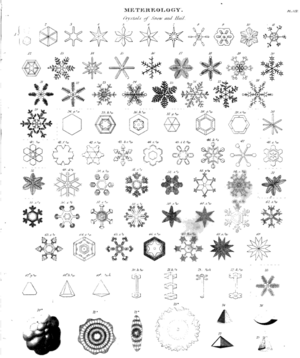George Harvey (FRS) facts for kids
George Harvey was a very smart English mathematician. He was known for writing about science and engineering. He wrote about topics like the weather, how to build ships, and even how some people see colors differently. He was a member of many important science groups.
Contents
George Harvey's Life Story
George Harvey lived in a town called Plymouth, in England. He first trained to be a doctor. But he really loved numbers and problems, so he became a mathematician instead!
He taught mathematics to a young man named William Yolland. William later became a famous engineer. George Harvey also taught math at a special school for soldiers. This school was called the Royal Military Academy, Woolwich.
George Harvey was invited to join many important science clubs. In 1824, he became a member of the Royal Society of Edinburgh. The next year, he joined the even more famous Royal Society of London. He was also part of the Royal Astronomical Society, the Geological Society, and the Linnaean Society. These groups were for top scientists and thinkers.
In his later years, George Harvey helped a group called the Society for the Diffusion of Useful Knowledge. He worked as their local helper in Plymouth. In 1834, a newspaper reported that he had passed away. They said he was one of the smartest mathematicians of his time. They also said he was a kind person who cared deeply about others. He was good friends with a poet named Nicholas Toms Carrington. He was also friends with an engineer and writer named Davies Gilbert.
George Harvey's Scientific Writings
George Harvey was friends with Charles Babbage, who invented early computers. Harvey was very interested in French mathematics. He translated important French books into English. These books were about special math methods like the method of least squares. He also translated books on the calculus of variations.
Understanding Weather: Meteorology
George Harvey wrote an article about meteorology, which is the study of weather. This article was for a big encyclopedia called the Encyclopædia Metropolitana. It was later printed on its own in 1834. He once noted that old sayings about the weather were sometimes more accurate than early science.
Harvey also wrote about "Naval Architecture" for the Metropolitana. This is the science of designing and building ships. He wrote for another encyclopedia, the Edinburgh Encyclopædia, about Plymouth and ships. His article on "Ship-building" was so good that the Tsar of Russia gave him a special diamond ring!
At a meeting in 1832, Harvey said that British ship designs needed more math. He felt that other countries were getting ahead. He believed that using more mathematical theory could make British ships even better.
Studying Clocks and Compasses
In 1824, George Harvey published two important papers. These papers were in a science journal called the Philosophical Transactions. One paper was about how accurate chronometers were. Chronometers are very precise clocks used on ships. The other paper was about the magnetic compass, which helps ships find their direction.
Pioneering Work on Color Vision
George Harvey also wrote a paper in 1824 about colour blindness. This paper was called On an Anomalous Case of Vision with regard to Colours. It was very important for its time. He used a special table from a book by Patrick Syme. This table helped scientists study color blindness in a new way. It moved the study from just looking at individual cases to using a more standardised test. This helped scientists understand how people see colors differently.


